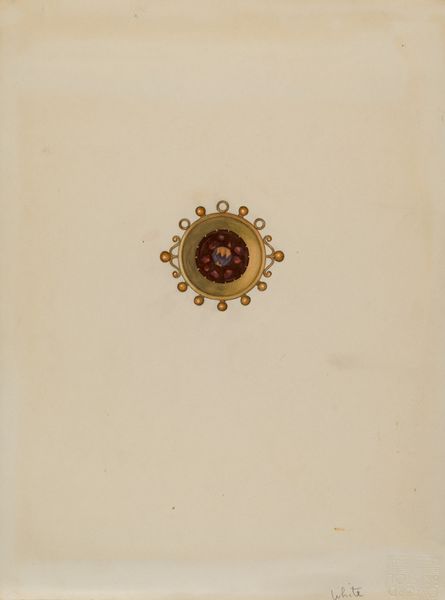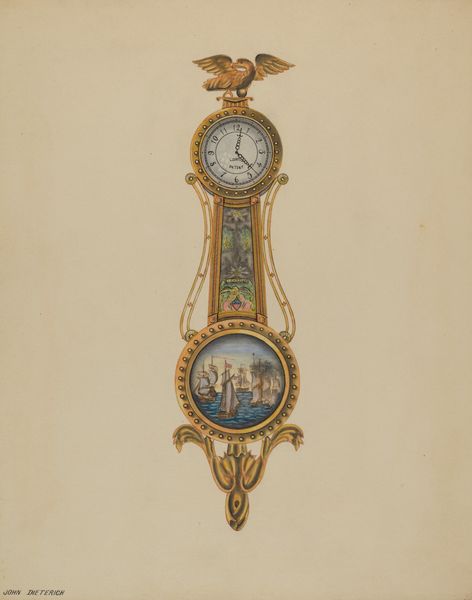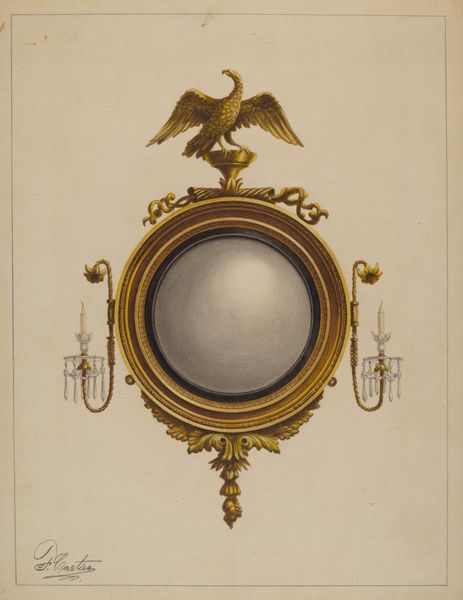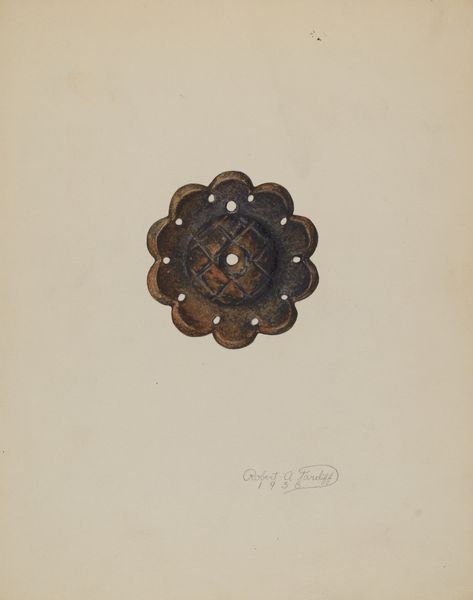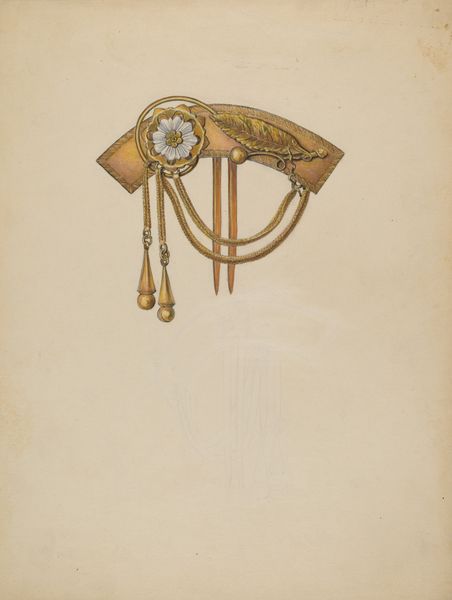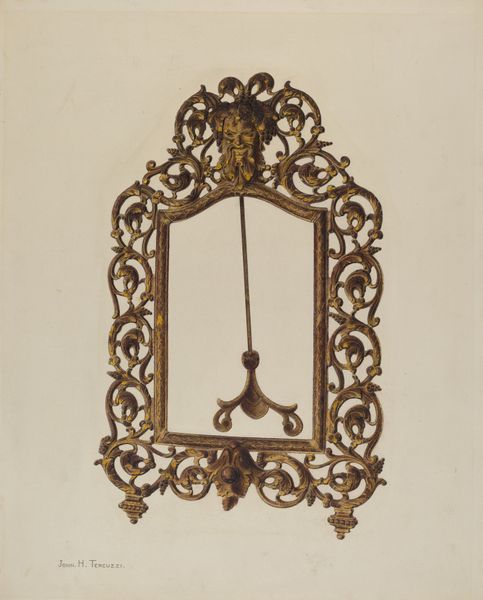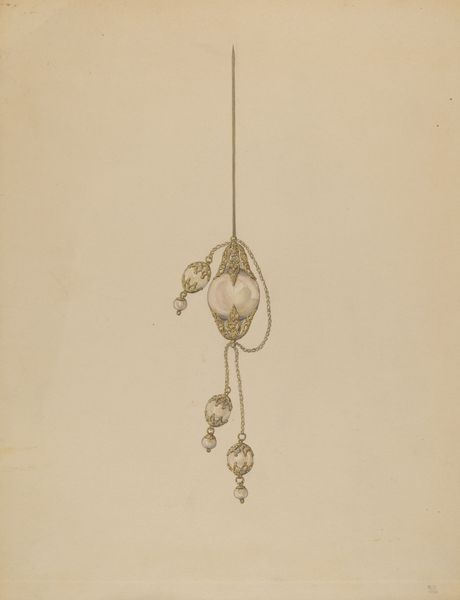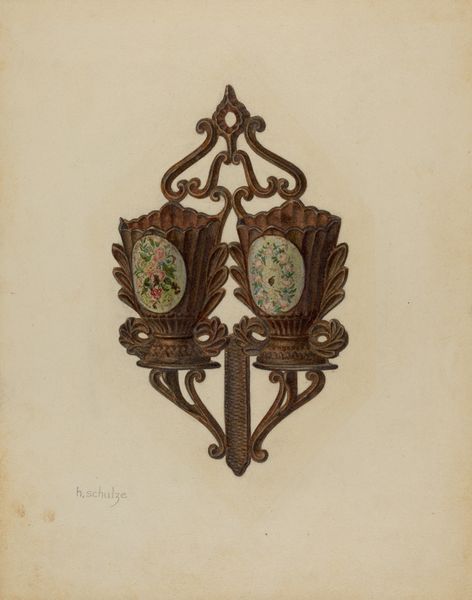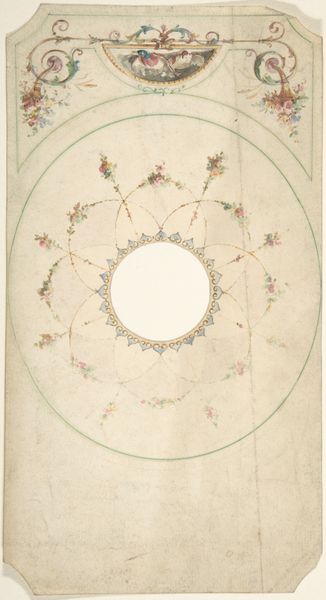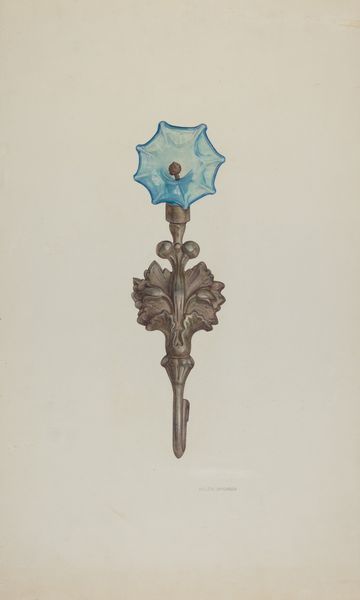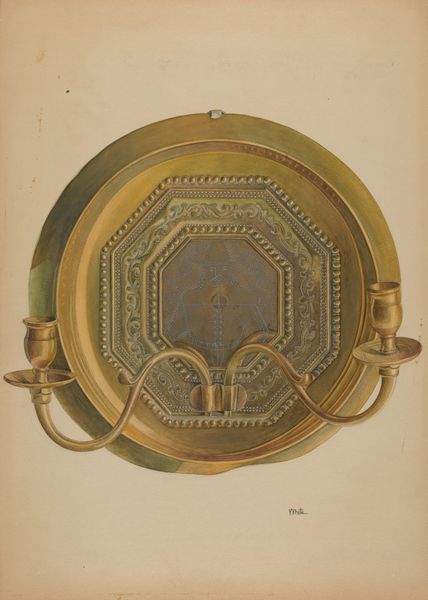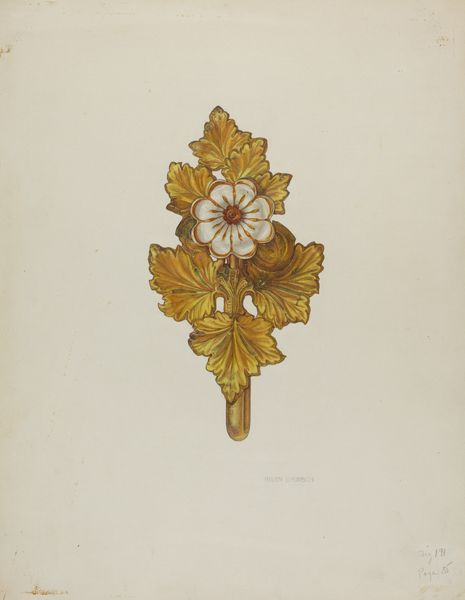
drawing, watercolor
#
portrait
#
art-deco
#
drawing
#
watercolor
#
decorative-art
#
watercolor
Dimensions: overall: 30.5 x 22.9 cm (12 x 9 in.)
Copyright: National Gallery of Art: CC0 1.0
Curator: I'd like to draw your attention to this drawing, simply titled "Brooch," created by Edward White around 1936. It's a watercolor that captures the elegance of Art Deco jewelry design. Editor: It feels almost… otherworldly. The deep purples and golds evoke ancient royalty or a talisman of sorts. I love the stylized starburst in the center. It's captivating. Curator: Indeed, that central motif is quite striking. The brooch’s design, with its concentric circles and geometric embellishments, reminds one of a celestial map or some kind of astronomical instrument, filtered through the sleek, modern lens of the Art Deco era. Editor: Right! Those repeating shapes resonate with a sense of time—almost hypnotic in the attention to detail. Makes me think of how adornment served not just as decoration but as amulets with a greater cultural function, a kind of shield, especially back in that interwar period. Curator: Precisely. Decorative arts of this period very frequently mirrored technological and social advancements, using stylized motifs of speed and industry while still echoing symbols of protection or spirituality. White may have consciously tapped into this broader sensibility, marrying old-world craftsmanship with modern symbolism. Editor: You know, looking closer, it's like there's an implied narrative happening here. That burst of light in the central element and these trailing pendants could be perceived to be visual echoes of stars... It seems almost primed to set the stage for the wearer as they step into the social scene as its protagonist. Curator: A delightful suggestion! Ultimately, whether read as symbolic of astronomical precision, or as aspirational fashion design, or even personal mythology, "Brooch" prompts interesting dialogues between tradition and the future, luxury, and talismanic powers. Editor: It definitely urges us to view everyday objects not just as superficial aesthetics but potential portals for reflection about personal power.
Comments
No comments
Be the first to comment and join the conversation on the ultimate creative platform.
